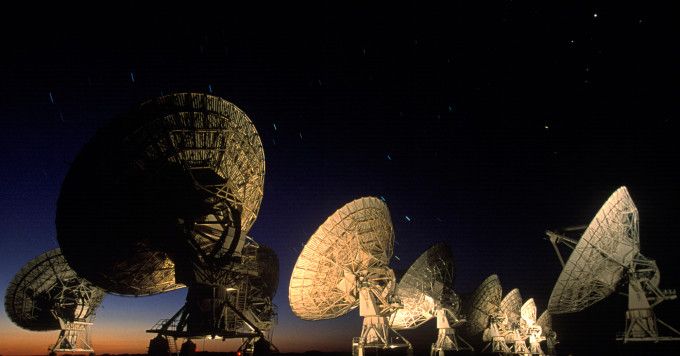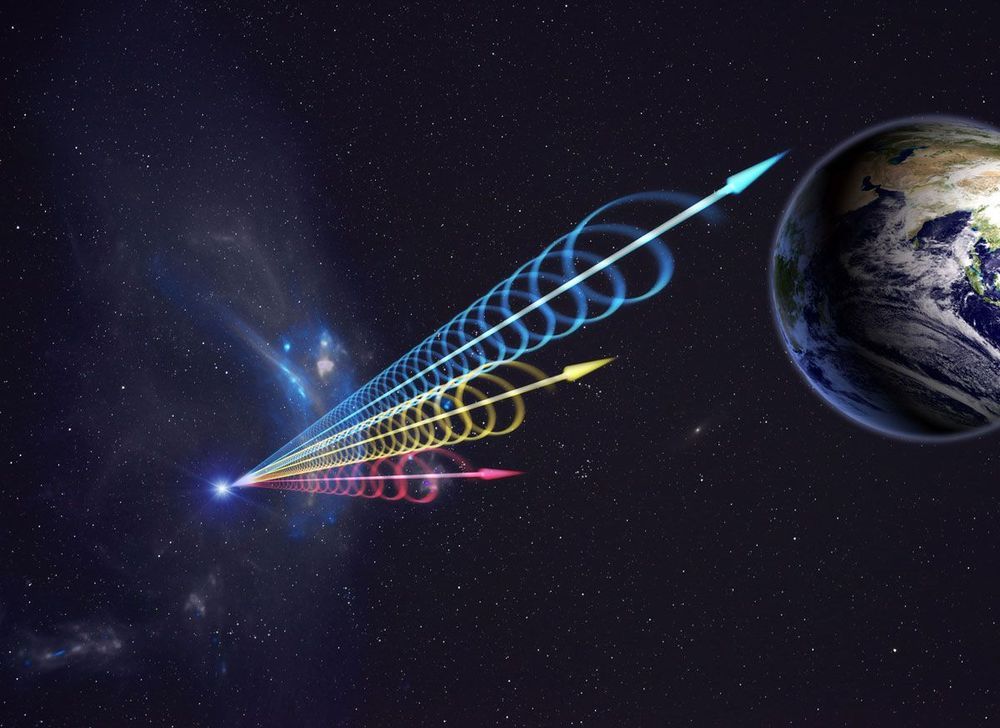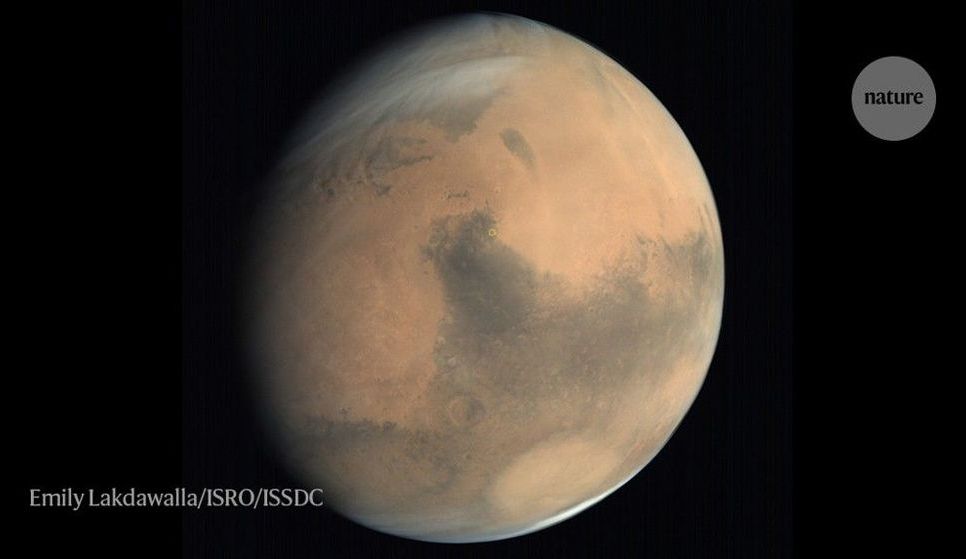Very odd posssibly some life form or possibly energy wave.
Space Mysteries: When scientists put their ear to the early universe, they found it yelled back.


Scientists are ramping up their efforts in the search for signs of alien life.
Experts at the SETI Institute, an organization dedicated to tracking extraterrestrial intelligence, are developing state-of-the-art techniques to detect signatures from space that indicate the possibility of extraterrestrial existence.
These so-called “technosignatures” can range from the chemical composition of a planet’s atmosphere, to laser emissions, to structures orbiting other stars, among others, they said.

Invisible radio signals from the cosmos have revealed previously unknown phenomena from prebiotic molecules in a starburst about 250 million light-years from Earth to the true rotation of Mercury. But the most famous occurred on August 6, 1967, when a squiggly stretch of high-speed recordings occupying less than a quarter-inch of astronomer Jocelyn Bell Burnell’s radio-telescope readouts revealed the first sign of something strange — an unknown cosmic mystery.
The minuscule signal appeared over and over again in the same part of the sky and she realized she was looking at a cosmic mystery — a repeating string of radio pulses spaced a bit more than a second apart that were unlike anything anyone had ever seen before. Bell-Burnell had detected the first evidence of a pulsar LGM-1 for Little Green Men. They thought the pulses could possibly be a beacon from an alien source.
Fast forward to today — mysterious circles of radio waves have left astronomers who are part of a pilot survey for a new project called the Evolutionary Map of the Universe (EMU) baffled with no idea how they formed, or even how big or far away they are. They don’t seem to match anything that has been seen before in the cosmos. The researchers dubbed them Odd Radio Circles, or ORCs.

Astronomers have discovered an activity cycle in another fast radio burst, potentially unearthing a significant clue about these mysterious deep-space phenomena.
Fast radio bursts, or FRBs, are extragalactic flashes of light that pack a serious wallop, unleashing in a few milliseconds as much energy as Earth’s sun does in a century. Scientists first spotted an FRB in 2007, and the cause of these eruptions remains elusive nearly a decade and a half later; potential explanations range from merging superdense neutron stars to advanced alien civilizations.

NASA is currently planning to return astronauts Bob Behnken and Doug Hurley to Earth on board SpaceX’s Crew Dragon spacecraft in about two weeks, the space agency told CNBC on Friday.
The spacecraft, which the astronauts named Endeavour, is scheduled to splash down in the Atlantic Ocean on Aug. 2 at about 3 p.m. ET, according to NASA’s Johnson Space Center public affairs officer Kyle Herring.
Herring noted that the departure time from the International Space Station “is a bit of a moving target,” but said in an email that the spacecraft is scheduled to un-dock at about 8 p.m. ET on Aug. 1. NASA will look more closely at the weather forecasts for where the spacecraft might splash down after the astronauts perform a spacewalk next week. NASA Administrator Jim Bridenstine also confirmed those dates.
Venus has always been a bit of the odd stepchild in the solar system. It’s similarities to Earth are uncanny: roughly the same size, mass, and distance from the sun. But the development paths the two planets ended up taking were very different, with one being the birthplace of all life as we know it, and the other becoming a cloud-covered, highly pressurized version of hell. That cloud cover, which is partially made up of sulfuric acid, has also given the planet an air of mystery. So much so that astronomers in the early 20th century speculated that there could be dinosaurs roaming about on the surface.
Some of that mystery will melt away if a team from NASA’s Jet Propulsion Laboratory gets a chance to launch their newest idea for a mission to the planet, the Venus Emissivity, Radio Science, InSAR, Topograph, and Spectroscopy (or VERITAS) mission.
VERITAS, which means “truth” in Latin, will seek to understand several truths about Venus. To do this it will rely, like all NASA missions on the instruments that make up its scientific payload. Since VERITAS is planned as an orbiter rather than a lander, its instrumentation will focus primarily on remote sensing. It will house two primary instruments, the Venus Emissivity Mapper (VEM) and the Venus Interferometric Synthetic Aperture Radar (VISAR). VERITAS will also be able to do some additional science without even needing a stand-alone instrument. In a neat bit of engineering innovation, the telecommunication system that the satellite uses to send data back to Earth will also be used to map the strength of variations in Venus’ gravitational field.

Earth, as we know it, is only teeming with life because of the influence of our Sun. Its light and heat provides every square meter of Earth — when it’s in direct sunlight — with a constant ~1500 W of power, enough to keep our planet at a comfortable temperature for liquid water to continuously exist on its surface. Just like the hundreds of billions of stars in our galaxy amidst the trillions of galaxies in the Universe, our Sun shines continuously, varying only slightly over time.
But without quantum physics, the Sun wouldn’t shine at all. Even in the extreme conditions found in the core of a massive star like our Sun, the nuclear reactions that power it could not occur without the bizarre properties that our quantum Universe demands. Thankfully, our Universe is quantum in nature, enabling the Sun and all the other stars to shine as they do. Here’s the science of how it works.
We hear a lot of talk about the possibility of intelligent E.T.s, but in this episode, neuroscientist Lori Marino gives us the nuts and bolts of what intelligence really is; how it manifests itself on our own Earth; and why intelligent aliens won’t necessarily need ginormous brains.

Three times in the coming month or so, rockets will light their engines and set course for Mars. A trio of nations — the United States, China and the United Arab Emirates (UAE) — will be sending robotic emissaries to the red planet, hoping to start new chapters of exploration there.
Each mission is a pioneer in its own right. The United States is sending its fifth rover, NASA’s most capable ever, in the hope of finding evidence of past life on Mars and collecting a set of rocks that will one day be the first samples flown back to Earth. China aims to build on its lunar-exploration successes by taking one of its rovers to Mars for the first time. And the UAE will be launching an orbiter — the first interplanetary mission by any Arab nation — as a test of its young but ambitious space agency.
It is far from a given that all these missions will make it; Mars is notorious as a graveyard for failed spacecraft. But if they do, they will substantially rewrite scientific understanding of the planet. The two rovers are heading for parts of Mars that have never been explored(see ‘Landing sites’), and the UAE’s orbiter will track the changing Martian atmosphere.

A team of researchers simulated conditions on water-rich exoplanets in the laboratory and learned something surprising about their geological composition.
Out beyond our solar system, visible only as the smallest dot in space with even the most powerful telescopes, other worlds exist. Many of these worlds, astronomers have discovered, may be much larger than Earth and completely covered in water — basically ocean planets with no protruding land masses. What kind of life could develop on such a world? Could a habitat like this even support life?
A team of researchers led by Arizona State University (ASU) recently set out to investigate those questions. And since they couldn’t travel to distant exoplanets to take samples, they decided to recreate the conditions of those water worlds in the laboratory. In this case, that laboratory was the Advanced Photon Source (APS), a U.S. Department of Energy (DOE) Office of Science User Facility at the DOEs Argonne National Laboratory.